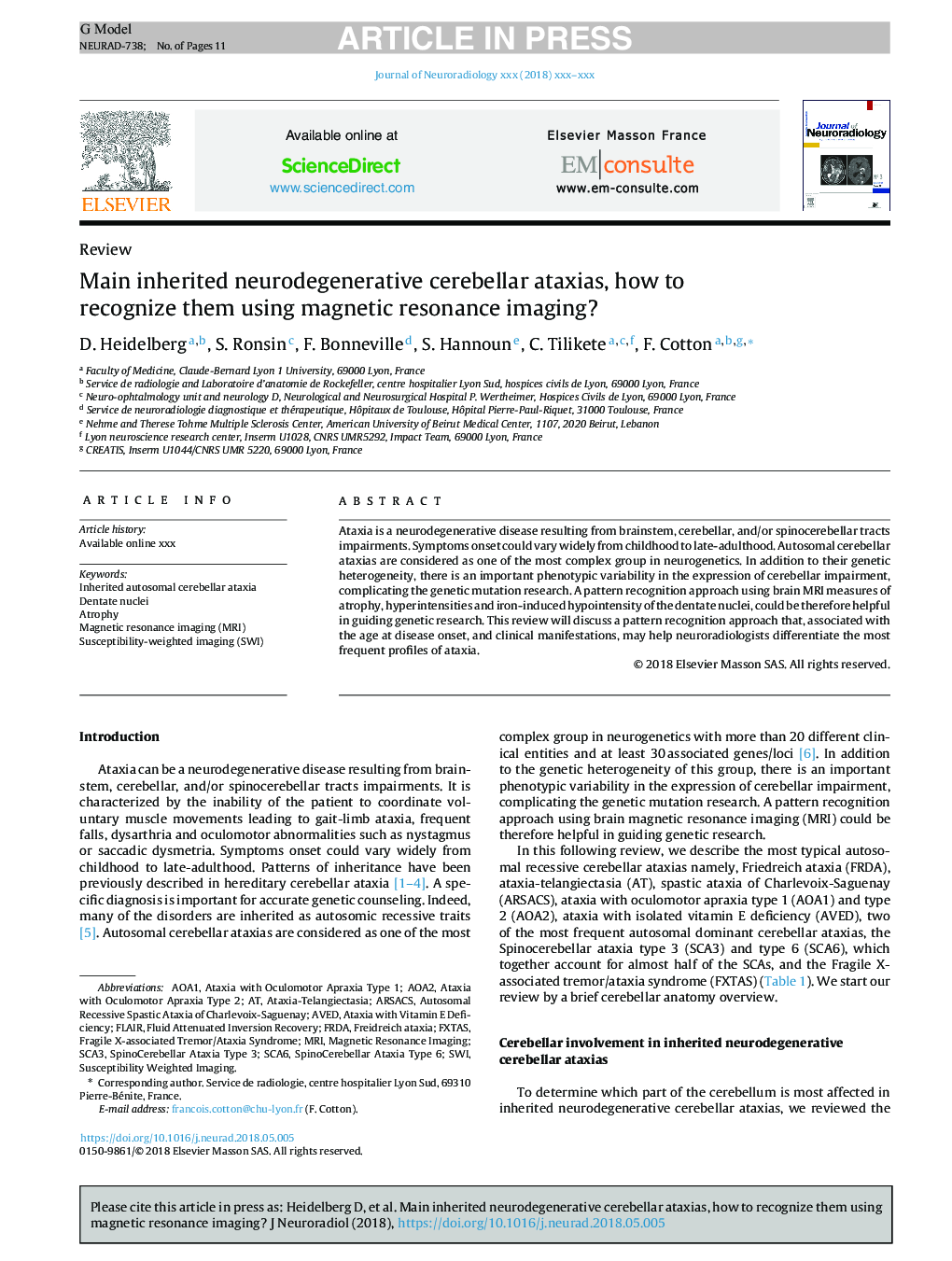| Article ID | Journal | Published Year | Pages | File Type |
|---|---|---|---|---|
| 8959129 | Journal of Neuroradiology | 2018 | 11 Pages |
Abstract
Ataxia is a neurodegenerative disease resulting from brainstem, cerebellar, and/or spinocerebellar tracts impairments. Symptoms onset could vary widely from childhood to late-adulthood. Autosomal cerebellar ataxias are considered as one of the most complex group in neurogenetics. In addition to their genetic heterogeneity, there is an important phenotypic variability in the expression of cerebellar impairment, complicating the genetic mutation research. A pattern recognition approach using brain MRI measures of atrophy, hyperintensities and iron-induced hypointensity of the dentate nuclei, could be therefore helpful in guiding genetic research. This review will discuss a pattern recognition approach that, associated with the age at disease onset, and clinical manifestations, may help neuroradiologists differentiate the most frequent profiles of ataxia.
Keywords
Ataxia with vitamin E deficiencySCA6Dentate nucleifragile X-associated tremor/ataxia syndromeAtaxia-telangiectasiaARSACSSusceptibility-weighted imaging (SWI)AOA1SCA3AOA2FRDAAVEDSWIFXTASAtrophyFLAIRMagnetic Resonance Imaging (MRI)MRIfluid attenuated inversion recoverySusceptibility weighted imagingMagnetic resonance imagingSpinocerebellar Ataxia Type 3Spinocerebellar ataxia type 6
Related Topics
Health Sciences
Medicine and Dentistry
Radiology and Imaging
Authors
D. Heidelberg, S. Ronsin, F. Bonneville, S. Hannoun, C. Tilikete, F. Cotton,
